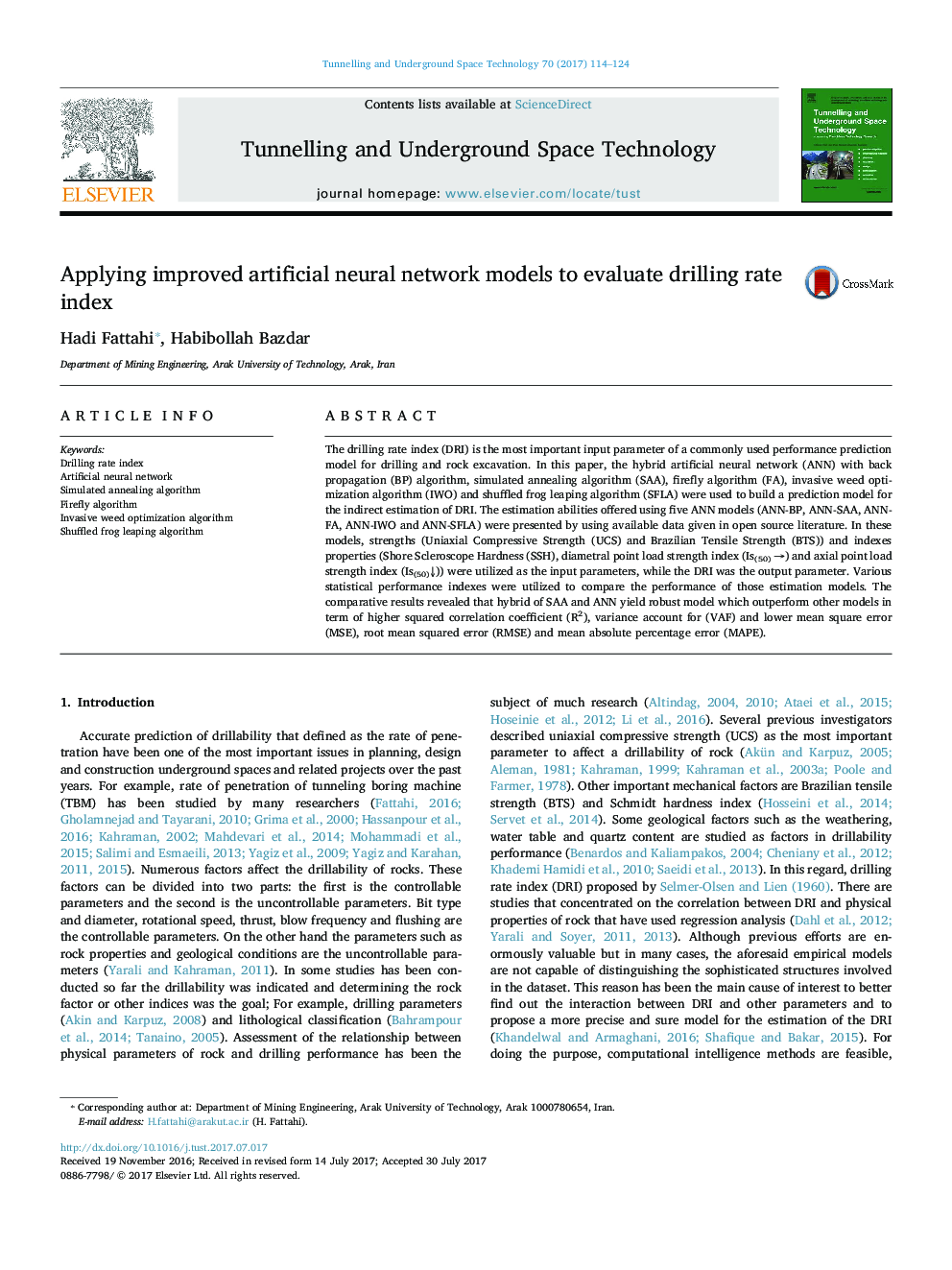| Article ID | Journal | Published Year | Pages | File Type |
|---|---|---|---|---|
| 4929225 | Tunnelling and Underground Space Technology | 2017 | 11 Pages |
Abstract
The drilling rate index (DRI) is the most important input parameter of a commonly used performance prediction model for drilling and rock excavation. In this paper, the hybrid artificial neural network (ANN) with back propagation (BP) algorithm, simulated annealing algorithm (SAA), firefly algorithm (FA), invasive weed optimization algorithm (IWO) and shuffled frog leaping algorithm (SFLA) were used to build a prediction model for the indirect estimation of DRI. The estimation abilities offered using five ANN models (ANN-BP, ANN-SAA, ANN-FA, ANN-IWO and ANN-SFLA) were presented by using available data given in open source literature. In these models, strengths (Uniaxial Compressive Strength (UCS) and Brazilian Tensile Strength (BTS)) and indexes properties (Shore Scleroscope Hardness (SSH), diametral point load strength index (Is(50) â) and axial point load strength index (Is(50)â)) were utilized as the input parameters, while the DRI was the output parameter. Various statistical performance indexes were utilized to compare the performance of those estimation models. The comparative results revealed that hybrid of SAA and ANN yield robust model which outperform other models in term of higher squared correlation coefficient (R2), variance account for (VAF) and lower mean square error (MSE), root mean squared error (RMSE) and mean absolute percentage error (MAPE).
Keywords
Related Topics
Physical Sciences and Engineering
Earth and Planetary Sciences
Geotechnical Engineering and Engineering Geology
Authors
Hadi Fattahi, Habibollah Bazdar,
